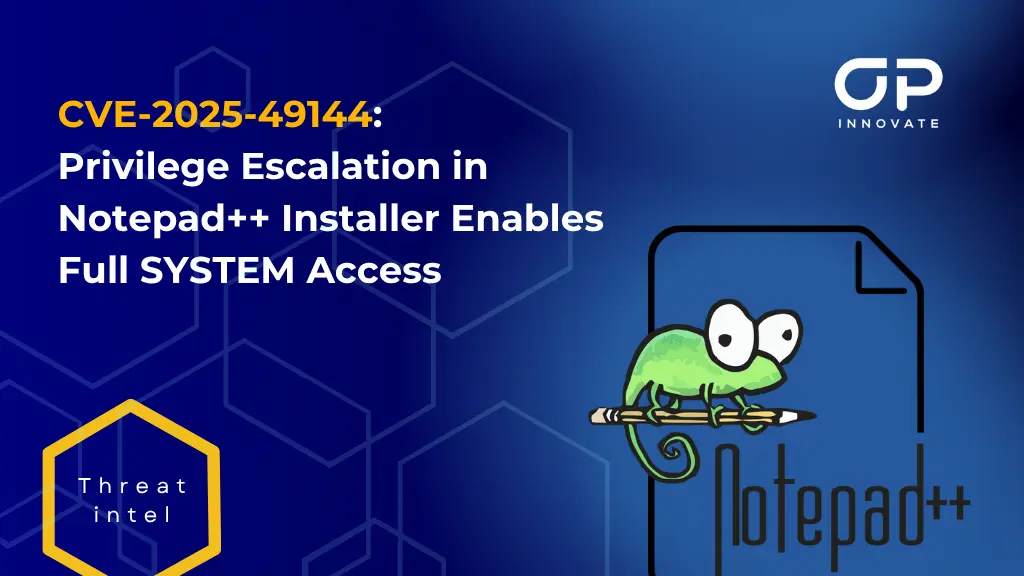The emergence of Scarred Manticore, an Iranian state-sponsored cyber threat group, represents a significant shift in the cyber espionage landscape in the Middle East. This development is not an isolated incident, but rather the manifestation of a larger and more complex cyber warfare strategy orchestrated by Iran’s Ministry of Intelligence and Security (MOIS). The sophisticated operations carried out by Scarred Manticore touch on key areas critical to the region’s national security and economic stability, raising significant concerns that extend far beyond the region’s borders. Characterized by sophisticated cyber tactics and strategic precision, the group’s activities highlight significant escalations in the cyber realm and reflect a nuanced understanding of digital warfare. The implications of Scarred Manticore’s activities are profound and signal a new era in cyber espionage that requires a review of existing security protocols and increased focus on developing robust cybersecurity measures at the regional and international level.
Evolution of Scarred Manticore’s Cyber Espionage Tactics
2019
- Initial Operations: Scarred Manticore launches its first cyber espionage operations. Early attacks mostly used the open-source Web shell Tunna.
- Target Regions: Focus on Middle Eastern countries, including Saudi Arabia, UAE, Jordan, Kuwait, Oman, Iraq, and Israel.
- Sectors Targeted: Initial focus on government, military, and telecommunications sectors.
2020
- Enhanced Tactics: Introduction of more sophisticated tools. Development of Foxshell, an evolved form of Tunna, demonstrating an increase in technical capabilities.
- Broader Scope: Expansion into the financial sector and IT service providers, indicating a broadening of target profiles.
- Stealth and Persistence: Increased emphasis on stealth and maintaining a persistent presence in compromised systems.
2021
- Liontail Framework: Development and deployment of the Liontail malware framework, a significant advancement in their cyber arsenal. Liontail is noted for its memory-resident, fileless nature, making it difficult to detect.
- HTTPSnoop Implementation: Use of a stealthy backdoor known as HTTPSnoop, targeting telecom providers with advanced tactics.
- Global Implications: Activities begin to draw international attention due to their sophistication and potential global security implications.
2022
- Customization and Adaptation: Further refinement of Liontail, with custom shellcode loaders and payloads tailored to individual targets, allowing their activities to blend seamlessly into legitimate network traffic.
- NGO Targeting: Expansion into targeting NGOs, indicating a further diversification of targets.
- Increased Sophistication: Enhanced stealth and evasion capabilities, making Scarred Manticore a formidable cyber threat.
2023 (Present)
- Continued Evolution: Ongoing development of their malware arsenal, indicating a commitment to staying ahead in the cyber espionage realm.
- Global Watch: Scarred Manticore remains a significant threat, with international cybersecurity agencies closely monitoring their activities.
- Call to Action: Increased emphasis on the need for robust cybersecurity measures globally to combat the sophisticated threat posed by Scarred Manticore.
Illustrative Case Studies: Scarred Manticore in Action
Case Study 1: Middle Eastern Financial Institutions
- Intrusion Method: Likely initiated via spear-phishing attacks targeting bank employees, followed by the exploitation of vulnerabilities in web applications.
- Technical Sophistication: The use of custom web shells indicates a high degree of customization in the attack tools, tailored specifically for the targeted banks’ systems.
- Broader Implications: The breach’s revelation of systemic vulnerabilities in the financial sector probably led to heightened concern about cybersecurity in banking globally. It might have accelerated the adoption of more stringent cybersecurity standards and regulatory requirements for financial institutions. This could include increased scrutiny of third-party vendors, enhanced employee training on cybersecurity best practices, and more significant investments in advanced threat detection and response capabilities.
Case Study 2: Telecommunications Sector in Jordan
- Surveillance Capabilities: The deployment of HTTPSnoop indicated a strategic approach, aiming for long-term access and monitoring of communications. This could have included intercepting high-level official communications, corporate secrets, and other sensitive information.
- Network Vulnerabilities: The attack likely exposed systemic weaknesses, such as outdated security protocols or unpatched systems, emphasizing the need for continuous security updates and audits.
- National Security Concerns: The breach’s impact on national security would have been significant. It likely triggered a comprehensive review of cybersecurity practices within the telecommunications sector, leading to the implementation of more robust security measures, including advanced threat detection systems and encryption protocols to safeguard against similar future threats. The incident may have also led to increased collaboration between government and private sector to fortify the nation’s digital infrastructure.
Case Study 3: Government Agencies in Iraq
- Tactics & Methodology: The attackers likely conducted extensive reconnaissance to identify vulnerabilities in the Iraqi government’s network. The use of the LIONTAIL malware framework, a complex and adaptive tool, provided them with capabilities for deep network penetration. The sophisticated command and control (C2) mechanisms facilitated real-time control and data exfiltration, while WinTapix.sys allowed them to operate at a kernel level, evading detection by most security programs.
- Impact on National Security: The leakage of sensitive information posed serious risks to national security, potentially exposing state secrets, defense strategies, and diplomatic communications. This could have led to a compromise in foreign policy negotiations, strategic planning, and internal governmental operations.
- Geopolitical Implications: The incident likely strained diplomatic relations, with potential accusations and tensions arising from the suspected involvement of foreign entities. It may have also triggered internal investigations, leading to a reshuffle in key governmental positions.
- Response and Countermeasures: This breach would have prompted the Iraqi government to conduct a thorough cybersecurity overhaul. Measures such as enhanced cyber threat intelligence, advanced intrusion detection systems, and increased cybersecurity training for government personnel would be critical. Additionally, this event may have spurred international collaboration for cybersecurity, leading to joint efforts in cyber defense and intelligence sharing.
In each case, the sophisticated nature of the attacks and their targets highlight the strategic intent of the threat actors, whose goal is not immediate financial gain but long-term intelligence gathering and geopolitical influence. It is considered to be power. These scenarios highlight the need for advanced cybersecurity measures and proactive threat intelligence to protect against cyber threats at the state level.
Comprehensive Targeting and Stealth Tactics:
- Expansive Targets: Scarred Manticore’s operations showcase a broad spectrum of targets. Beyond traditional areas such as government, military, and telecommunications, we are also expanding into the financial sector, energy industry, and various critical infrastructures. This wide-ranging targeting approach reveals deep strategic intent and understanding of key nodes in domestic and international power structures, making cyber espionage operations far-reaching and complex
- Ongoing covert operations: Scarred Manticore has been active since at least 2019 and has demonstrated remarkable stealth in data breaches and intrusions. This long-running covert operation highlights advanced operational security measures and sophisticated evasion tactics. The group’s ability to remain undetected while infiltrating high-value targets reflects its advanced expertise in cyber espionage, making it a formidable threat in the digital realm. Their operations demonstrate not only technical excellence but also the strategic perseverance and depth of planning essential to organizing a sustained espionage operation.
LIONTAIL Framework – Redefining Espionage Technology:
- Multifaceted Suite Reflecting Quantum Leap: LIONTAIL transcends the traditional boundaries of cyber tools and evolves into a multidimensional suite that represents a significant advancement in remote espionage capabilities. This suite includes a variety of advanced tools and techniques carefully designed to perform complex espionage operations. Its emergence marks a leap forward in cyber operations, as it provides Scarred Manticore with unprecedented remote access and control capabilities, increasing the group’s potential to coordinate complex cyber operations.
- Innovative Stealth and Customization: LIONTAIL’s “greatest feature” is its high adaptability to individual targets, a testament to its sophisticated design. This customization allows the suite to seamlessly integrate and operate across a variety of network environments, making its activity virtually indistinguishable from legitimate network traffic. Such innovations pose significant challenges to standard cybersecurity measures, as traditional detection methods may not be able to detect or mitigate the advanced threats posed by LIONTAIL. This adaptability not only increases the effectiveness of Scarred Manticore’s operations, but also marks a new era in cyber espionage tactics in which stealth and adaptability play key roles.
In-Depth Analysis of Scarred Manticore’s Operations and Impacts:
- Long-Term Strategic Goals: Scarred Manticore’s operations are not random acts of cyber aggression but are deeply aligned with Iran’s broader geopolitical strategy. By leveraging cyber intelligence, they aim to exert significant influence within the region. This strategic use of cyber operations reflects a calculated approach to advancing Iran’s national interests, extending beyond mere espionage to potentially include shaping political narratives and destabilizing regional adversaries. Their sophisticated cyber campaigns are instrumental in this broader geopolitical chess game, where control over information and disruption capabilities can translate into significant regional leverage.
- Global Security Threats: The insights from FBI Director Christopher Wray bring into focus the global implications of Scarred Manticore’s operations. Their activities, while centered in the Middle East, have the potential to ripple out, affecting international security and the delicate balance of global cyber diplomacy. These operations could set precedents for other nation-state actors, potentially escalating cyber conflicts and influencing international cyber norms. The repercussions of such activities extend into various domains, including economic stability, international relations, and national security for various countries, thereby necessitating a concerted global response to counteract these emerging threats and to formulate strategies that address the evolving landscape of state-sponsored cyber activities.
Evolution of Iranian Cyber Capabilities:
- Progressive Toolset Development: The Scarred Manticore’s growing arsenal clearly demonstrates Iran’s growing cyber maturity. The toolkit doesn’t just evolve. State-of-the-art technologies are being gradually integrated, reflecting the continued development of cyber warfare capabilities. This represents a strategic investment in the development and acquisition of advanced cyber tools and technology and demonstrates Iran’s commitment to strengthening its cyberwarfare capabilities. The group’s ability to innovate and adapt demonstrates a dynamic approach to cyber espionage that keeps pace with global technological advances.
- OilRig Connection and Diversification: Significant overlap with OilRig, another well-known Iranian cyber-group, suggests a common operational framework or origin. However, the specificity of the Scarred Manticore operation suggests a deliberate diversification of Iran’s state-sponsored cyber initiatives. This diversification represents a strategic move to expand Iran’s cyber capabilities and could lead to the creation of multiple specialized units or groups with unique operational focuses. Such a strategy would enable Iran to cover a wider range of cyber operations, from espionage to sabotage, and improve its ability to engage in complex and multifaceted cyber operations.
Implications for Global Cybersecurity:
- Escalating Threat Landscape: Scarred Manticore’s advanced tactics, particularly with LIONTAIL, signal a surge in state-sponsored cyber threats. This evolving threat landscape necessitates heightened cybersecurity alertness and robust countermeasures.
- Need for Dynamic Cybersecurity Strategies: As these operations increasingly align with Iranian strategic interests, robust and vigilant cybersecurity measures become paramount in protecting against these sophisticated and advancing threats.
Future Outlook and Call to Action:
- Anticipated Expansion and Sophistication: Scarred Manticore’s business is expected to not only continue, but increase in complexity and geographic scope. Researchers predict a future in which Scarred Manticore may incorporate more sophisticated cyber-attack techniques and utilize AI and machine learning to improve its espionage and data extraction capabilities. This escalation could also lead to expansion into new global territories, potentially targeting a wider range of sectors and increasing threats to the national and international cybersecurity environment.
- International Cooperation for Robust Cyber Defense: A global, unified approach to cyber defense is essential to address the growing threat of the Scarred Manticore. This approach should focus on improving international information-sharing networks so that countries can quickly share information about emerging cyber threats and vulnerabilities. Additionally, we need to develop cooperative defense strategies that pool the resources and expertise of different countries to develop more effective countermeasures against complex cyber threats. Such cooperation will be essential not only to counter immediate threats, but also to prepare for future challenges in the rapidly evolving field of cyber warfare.
- Continuous Penetration Testing: Identify Vulnerabilities and reveal risk exposures in your application with automated penetration testing. Penetration tests like those done in OP Innovate are specifically tailored for your application, ensuring maximum effectiveness without disrupting your operations.
In conclusion, Scarred Manticore’s evolving strategy requires a dynamic and proactive approach to cybersecurity, emphasizing the importance of international intelligence cooperation and unified defense against advanced state-sponsored cyber threats.









